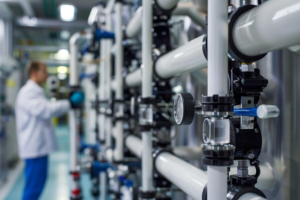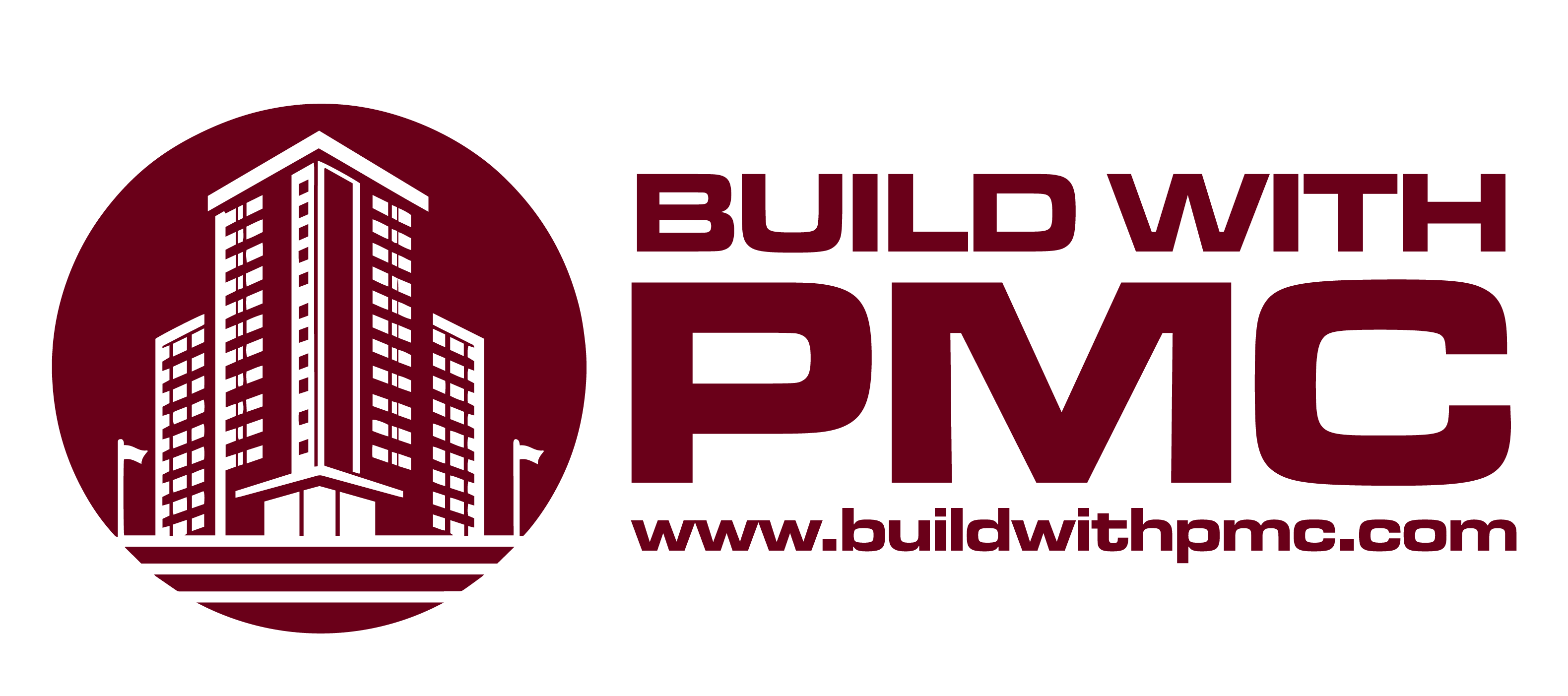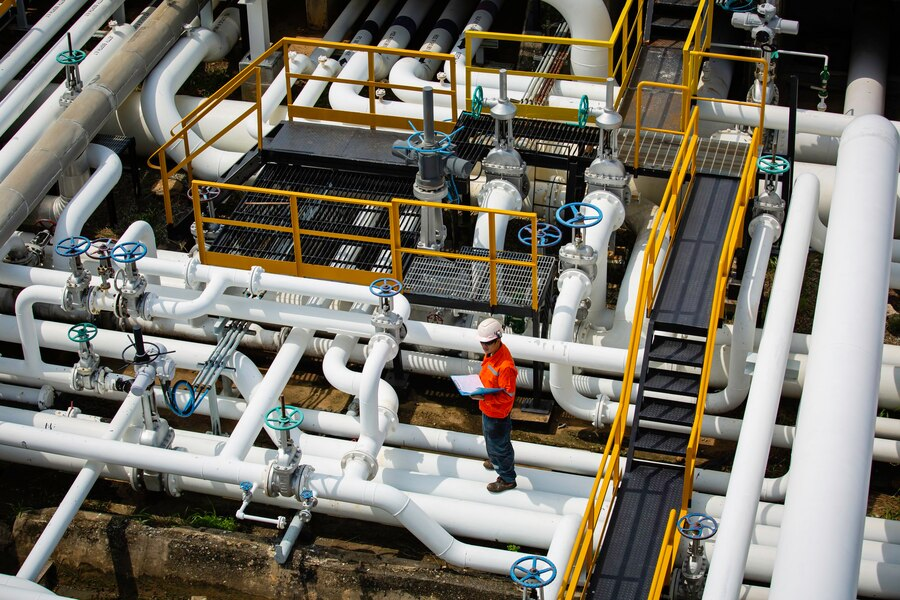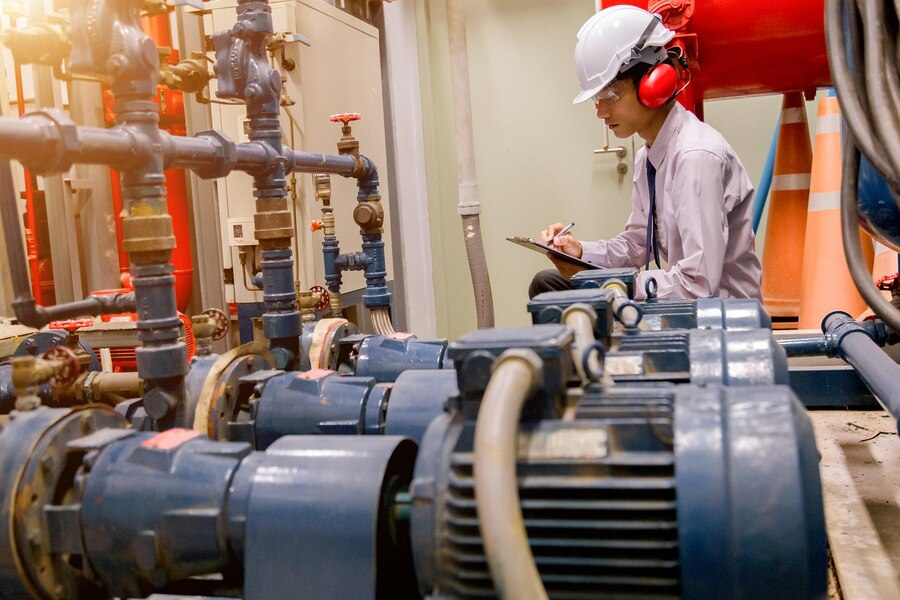When it comes to optimizing your process piping layout, a thoughtful approach can make a significant difference. Start by considering the flow of materials, ensuring that pipes are arranged to minimize bends and unnecessary length. Grouping related systems together can reduce installation time and costs, while maintaining easy access for maintenance is crucial. Think about the expansion and contraction of materials due to temperature changes, and plan accordingly to avoid future headaches. Ultimately, a well-designed layout not only improves efficiency but also enhances safety and reduces operational issues down the line.
Understanding Process Piping Fundamentals
To optimize your process piping layout, it’s essential to grasp the fundamentals of process piping systems. These systems are vital for transporting fluids—whether liquids or gasses—between different parts of a facility. Understanding the characteristics of various materials and their behaviors under pressure is crucial. Additionally, familiarizing yourself with industry standards and regulations will help ensure compliance. Knowledge of flow dynamics, pressure drops, and the thermal properties of the materials being transported will set a solid foundation for making informed design decisions that enhance efficiency and safety.

The Role of Piping Materials
Choosing the right materials for your piping system is critical for optimizing performance and longevity. Common options include steel, PVC, and copper, each with unique properties suited for specific applications. Consider factors like corrosion resistance, pressure rating, and temperature tolerance when selecting materials. The right choice not only ensures fluid integrity but also minimizes maintenance costs and enhances overall system reliability, ultimately contributing to operational efficiency.
Understanding Fluid Dynamics
Fluid dynamics plays a vital role in the design and optimization of piping layouts. By understanding how fluids behave under various conditions, you can predict pressure drops, flow rates, and potential bottlenecks. This knowledge allows for strategic placement of valves, pumps, and fittings to enhance efficiency. An optimized layout that accounts for fluid dynamics will reduce energy consumption and improve the overall performance of the piping system, benefiting your operations.
Importance of Industry Standards
Familiarizing yourself with industry standards is essential for ensuring compliance and safety in your piping design. Standards, such as ASME and ANSI, provide guidelines on material selection, installation practices, and safety protocols. Adhering to these regulations minimizes risks associated with piping failures and ensures that your system operates efficiently. Understanding and implementing these standards will not only protect your facility but also enhance your reputation in the industry.
Designing for Maintenance
Incorporating maintenance considerations into your piping layout is crucial for minimizing downtime and repair costs. Design your layout to allow easy access to valves, gauges, and other critical components, making maintenance activities more efficient. Consider using modular components that simplify disassembly and reassembly. A well-planned design reduces the risk of unexpected breakdowns and prolongs the life of your piping system, ultimately enhancing productivity and operational continuity.
Evaluating Environmental Impact
When designing your piping system, it’s important to evaluate its environmental impact. Consider factors such as leakage potential, energy consumption, and material sustainability. Implementing environmentally friendly practices, such as using recycled materials and energy-efficient components, can significantly reduce your facility’s carbon footprint. By prioritizing environmental responsibility in your piping design, you not only comply with regulations but also contribute to a sustainable future, enhancing your organization’s reputation and social responsibility.
Analyzing Flow Requirements
Before diving into the layout, analyzing the flow requirements of your piping system is critical. Start by determining the types of fluids being transported, their flow rates, and the system’s operational parameters. Understanding these elements allows you to design a layout that minimizes friction losses and maximizes efficiency. Consider the effects of gravity and pressure on fluid movement, as well as any potential bottlenecks. A thorough analysis will help you create a design that not only meets current needs but is also adaptable for future changes in demand.
Prioritizing Accessibility and Maintenance
One of the keys to an effective piping layout is ensuring accessibility for maintenance and inspection. Pipes should be arranged to allow easy access for operators and maintenance teams without requiring extensive disassembly. This includes avoiding tight spaces and ensuring there’s adequate clearance around valves, gauges, and other critical components. Designing for accessibility not only reduces downtime during maintenance activities but also enhances overall safety. By making maintenance straightforward, you can prolong the lifespan of your piping system and minimize unexpected operational disruptions.
Utilizing Space Efficiently
Space efficiency is another critical factor in process piping layout optimization. In many facilities, space is limited, so it’s important to make the most of what you have. Consider vertical piping solutions when floor space is tight, and explore routing options that avoid unnecessary bends and detours. Using modular designs can also enhance flexibility and adaptability, allowing for easier modifications in the future. An efficient layout can significantly reduce installation costs and improve workflow, ultimately contributing to a more streamlined operation.
Accounting for Thermal Expansion
Thermal expansion is an often-overlooked factor that can significantly impact piping systems. As temperatures fluctuate, materials expand and contract, which can lead to stress on the piping and fittings if not properly managed. To optimize your layout, incorporate expansion loops or bends to accommodate movement without compromising system integrity. Additionally, using expansion joints can help absorb thermal movement. By planning for thermal expansion in your design, you’ll minimize the risk of leaks, failures, and costly repairs, ensuring the longevity of your piping system.
Incorporating Safety Measures
Safety should always be a top priority when designing your piping layout. Implementing safety measures at the design stage can prevent accidents and ensure compliance with regulations. This includes proper placement of safety valves, pressure relief devices, and emergency shut-off systems. Additionally, consider the potential risks associated with the materials being transported, such as toxicity or flammability. Designing with safety in mind not only protects personnel and equipment but also fosters a culture of safety within the facility, leading to a more productive work environment.
Collaborating with Stakeholders
Collaboration is essential in the process piping design phase. Involving key stakeholders—such as engineers, operators, and safety personnel—can provide valuable insights that enhance the layout. Each group brings a unique perspective, ensuring that the design meets operational needs and safety standards. Regular communication and brainstorming sessions can help identify potential challenges early in the process, leading to more innovative solutions. By fostering a collaborative environment, you can create a piping layout that not only meets technical specifications but also aligns with the overall goals of the facility.
Embracing Technology and Software Tools
Leveraging technology and software tools can greatly enhance the optimization of your process piping layout. Advanced design software allows for precise modeling and simulations, enabling you to visualize potential flow patterns and identify issues before implementation. These tools can also facilitate collaboration among team members and streamline the design process. Additionally, using data analytics can help you monitor system performance post-installation, providing insights for future optimizations. Embracing technology not only improves the design phase but also enhances long-term efficiency and reliability of your piping systems.
- Advanced Design Software: Utilizes precise modeling and simulations to visualize flow patterns and pinpoint potential issues before implementation, leading to a more efficient design process.
- Enhanced Collaboration: Facilitates teamwork among engineers, operators, and stakeholders, streamlining communication and ensuring that all perspectives are considered in the design.
- Data Analytics Integration: Enables real-time monitoring of system performance post-installation, offering valuable insights for ongoing improvements and optimizations.
- Improved Efficiency: Embracing technology in the design phase significantly boosts the long-term efficiency and reliability of piping systems, reducing the likelihood of failures.
- Future-Proofing: The use of advanced tools not only addresses current needs but also allows for adaptability and scalability in response to future operational changes and demands.
Conclusion
Optimizing your process piping layout is crucial for enhancing efficiency, safety, and overall operational performance. By considering factors such as flow dynamics, maintenance accessibility, and compliance with industry standards, businesses can significantly improve their productivity. Whether you’re starting a new project or looking to retrofit existing systems, a well-thought-out piping layout can save time and resources in the long run.
For expert assistance in optimizing your process piping layout, contact PMC INC today. Our team in Southern California is ready to provide tailored solutions to meet your needs. Call us at **562-905-3101** for a consultation or more information. We look forward to helping you enhance your operations!



